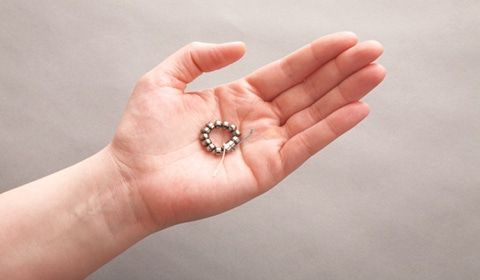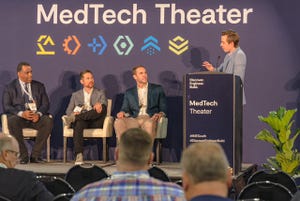Implant Reduces Reflux by Tightening Sphincter
How can you get a Colbert Bump in the medical world? Read more to find out.

In the world of late-night comedy, the so-called Colbert bump – the boost that guests on the Stephen Colbert show receive following the broadcast– is hilarious if fictitious.
In the medical world, the NEJM bump is no laughing matter. And that is presumably what Minnesota-based medical device company Torax Medical will receive in short order.
The company, which makes a novel device to treat acid reflux, announced Thursday that the well-respected New England Journal of Medicine has published a clinical study, which demonstrated the clinical effectiveness of the LINX device to treat gastrointestinal reflux disease (GERD). People suffering from this condition often see no relief from drugs as a weak sphincter allows stomach acid to escape into the esophagus causing severe discomfort. That includes an inability to sleep when lying prone.
The controlled multicenter study was conducted at 14 U.S and European medical centers and was the basis of the company’s premarket approval application to the Food and Drug Administration. The agency approved the device in March last year and institutions like the Mayo Clinic have begun offering the procedure for patients whose acid reflux cannot be controlled by drugs.
|
The LINX anti-reflux device. |
So how does the device work? It attacks the root of the problem said a Mayo Clinic professor of surgery.
“The biggest challenge in treating patients with GERD over the last 20 years is that the medicines available alleviate the symptoms but are unable to treat the underlying problem – a weak sphincter,” C. Daniel Smith, M.D., Professor of Surgery and Chair of the Department of Surgery at Mayo Clinic in Florida, in a Torax news release. (Smith also took part in the 14-center study whose results were published in the NEJM)
And unlike more invasive options with side effects, the LINX device is minimally invasive. Specifically, it uses a small, flexible band of interlinked titanium beads wrapped around magnetic cores, which is laparoscopically implanted around the esophageal sphincter. The magnetic attraction is designed to resist the opening of the sphincter to gastric pressure, thereby preventing the entry of stomach acids into the esophagus. At the same time, much higher pressures from swallowing can overcome the magnetic pull and allow food and liquid to pass normally into the stomach.
In the study, all patients stopped experiencing severe regurgitation while an overwhelming 93 percent said they felt a reduced need to take drugs. Even the patients’ satisfaction levels saw a dramatic spike – 13 percent said they were satisfied with their overall condition through medication before the procedure, but following the device’s implant 94 percent reported satisfaction.
And these are patients who suffered from chronic gastrointestinal reflux disease for a median of 10 years and who had been taking medication for a median period of five years.
The CEO of Torax Medical is hoping that this study will give the confidence to physicians to take this innovative path to treating stubborn acid reflux.
"This study featured in the NEJM further validates the rigorous clinical trial conducted to confirm the safety and effectiveness of the LINX System, the only FDA-approved device currently available to treat reflux disease. Publication of this data in a discerning medical journal provides additional information to physicians, providers, and payers to evaluate the LINX System as a treatment option for patients suffering from chronic GERD," said Todd Berg, also the company's co-founder in an email.
—
More Content
Proteus Digital Health Wants to Create a Real Healthcare System
About the Author(s)
You May Also Like



